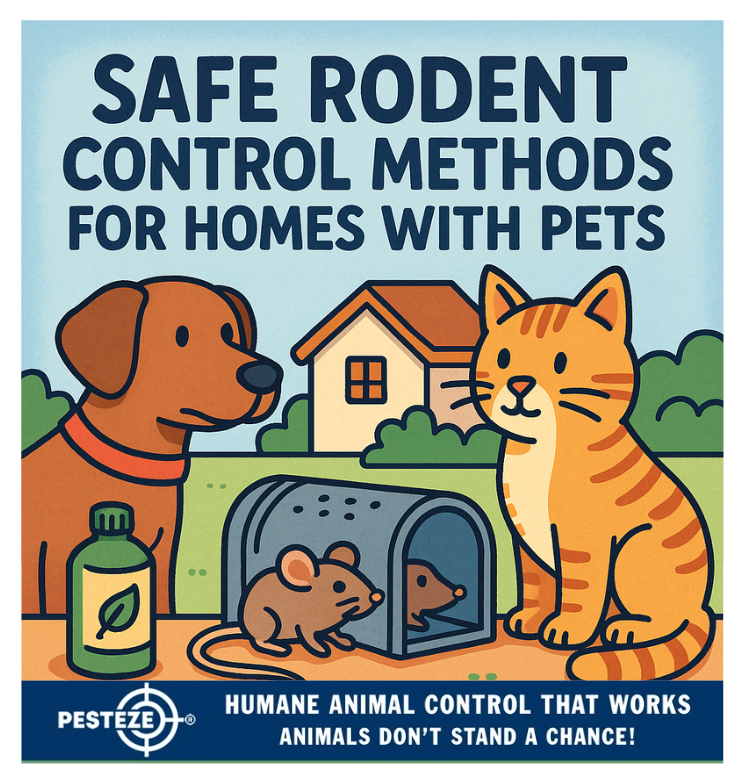SAFE RODENT CONTROL METHODS FOR HOMES WITH PETS

SAFE RODENT CONTROL METHODS FOR HOMES WITH PETS
SUMMARY
Controlling rodents in homes with pets requires extra caution. Many traditional methods are toxic or dangerous for cats and dogs. This guide explains safe, effective, and pet-friendly strategies to manage rodent problems without putting your pets at risk.
FEATURES
-
Seal entry points: Block cracks, gaps, and openings to prevent rodents from entering.
-
Use pet-safe traps: Choose enclosed humane traps instead of poisons.
-
Eliminate attractants: Keep food sealed and reduce clutter.
-
Natural deterrents: Use scents like peppermint oil that repel rodents but are safe for pets.
-
Monitor pet behavior: Pets may detect rodents before you do.
-
Seek professional help: Choose pest control services that specialize in pet-safe solutions.
GUIDE DESCRIPTION
Rodent infestations pose risks to households, but when you live with pets, solving the problem requires special care. Many common rodent control methods, such as poisons and glue traps, are highly dangerous to cats and dogs. Instead, focus on safe, pet-friendly solutions that protect both your furry friends and your home.
The first step is prevention. Seal entry points around your home to block rodents from getting inside. Check foundations, doors, windows, and areas where pipes or wires enter. Steel wool and caulk work well to plug small holes, while hardware cloth can cover larger gaps.
If rodents are already inside, opt for pet-safe traps. Enclosed live traps or covered snap traps can effectively capture rodents while keeping pets from accessing them. Humane traps allow for live capture and relocation, while covered snap traps reduce the risk of accidental injury. Avoid glue traps entirely, as they are cruel and can also harm curious pets.
Reducing attractants is equally important. Eliminate food sources by storing food in sealed containers, cleaning up spills promptly, and ensuring pet food isn’t left out overnight. Clutter provides nesting sites for rodents, so keeping storage areas tidy further deters infestations.
For added protection, consider natural deterrents. Peppermint oil, cloves, and vinegar are scents that rodents dislike but are generally safe for pets when used correctly. Place cotton balls soaked in these solutions near rodent entry points or activity areas. Avoid chemical repellents, as they can harm both rodents and pets.
Another helpful strategy is to monitor your pet’s behavior. Cats and dogs often notice rodents before humans do. If your pet seems fixated on a wall, cabinet, or attic space, it may be a clue to rodent activity.
Finally, if the problem persists, seek professional help. Choose pest control providers who specialize in pet-safe rodent control methods. They can tailor solutions to your home that effectively remove rodents without endangering your pets.
By combining prevention, pet-safe traps, natural deterrents, and professional guidance when necessary, you can maintain a rodent-free home without compromising your pets’ safety.
- Saneeth Thota


Comments 0